THE CROSSROADS OF EMBODIMENT
At the heart of The Unitive Way lies a symbol known as the Centered Cross—a form that radiates meaning in all directions, grounded in spiritual philosophy and embodied experience. One powerful interpretation of this symbol is what we call the Cross of Gender and Eros (CGE). This version of the cross gives us a way to reflect on gender and sexuality not as fixed facts about human identity, but as flowing energies, ethical principles, and archetypal patterns that structure how we live, love, and become whole.
In a time when discourse around sex, gender, and identity is often reduced to ideology or biology, the Cross of Gender and Eros offers something different: a sacred map of our embodied being. This cross doesn’t judge or prescribe. It welcomes. It reveals. It invites us to orient our lives with dignity and clarity, wherever we may be on the spectrum of experience.
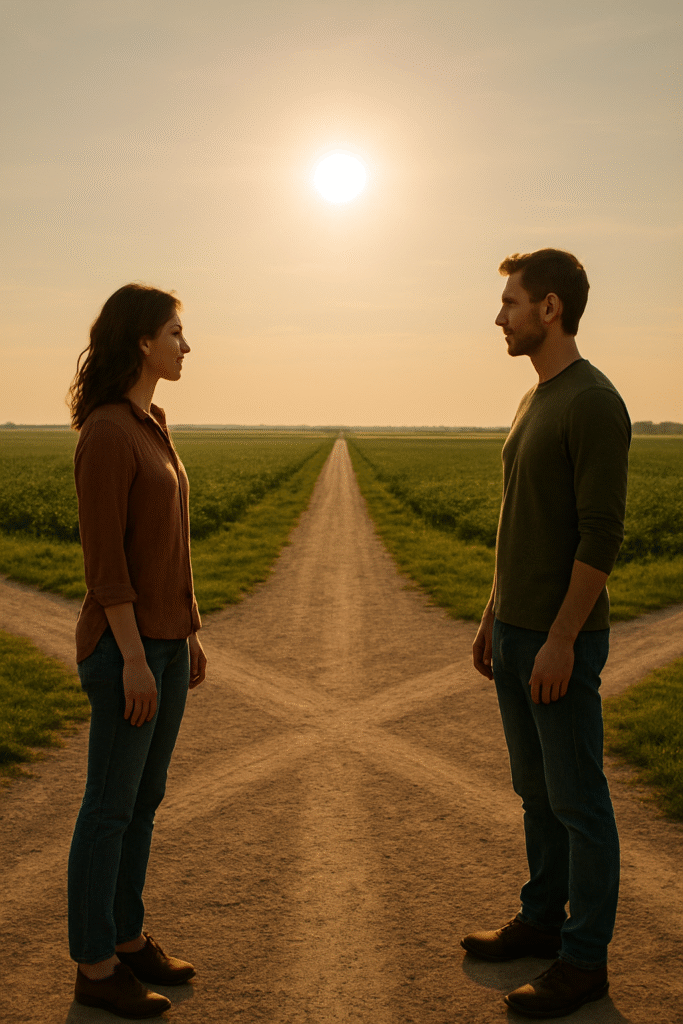
The Four Directions of the Cross
The Cross of Gender and Eros consists of four cardinal directions—upward, downward, leftward, and rightward—each representing a dynamic pole of human experience.
Upward: Eros and Heterosexuality
The upward-facing beam of the CGE represents Eros—the archetypal force of desire, longing, beauty, and creative tension. This direction also holds the symbolic resonance of heterosexuality, particularly as it expresses itself in the polarity between masculine and feminine. Hetero-eros is the pull toward “the other,” the spark that dances between perceived difference.
Eros includes sexual longing, yes, but it is not confined to it. It is also the energy of creative expression: the artist who paints from passion, the writer channeling a book from their soul, the dancer losing themselves in movement. Eros is the drive to make, to connect, to reach beyond what is.
This upward direction is expressive, ascending, outward-reaching. It’s the flame that rises, the force that seeks connection through difference. In spiritual terms, it aligns with aspiration, transcendence, and the upward spiral of personal becoming.
Downward: Agape and Homosexuality
Opposite the upward pull of eros is the downward-facing beam, symbolizing Agape—the love that descends, roots, holds, and sustains. While eros longs, agape accepts. While eros seeks beauty, agape offers presence. This axis also resonates with homosexuality, not only as a matter of orientation but as an archetype of love within sameness, within resonance.
Agape expresses itself in the grounding relationships of life: friendship, parent-child bonds, caregiving, and self-love. It is the love that sees and stays. Agape is often quiet, stable, and enduring.
This downward movement brings us back to earth. It is the grounding force, the embodiment of belonging. Spiritually, it reflects the descent of grace, the path of incarnation, and the fullness of being here, now, in this body and this life.
Leftward: Femininity
Turning left, we find the feminine principle—an archetype not confined to women or female bodies, but available to all as an inner current. The feminine, in this model, represents receptivity, intuition, fluidity, relationality, and lunar qualities.
To face leftward on the CGE is to attune to the rhythms of the moon, the mysteries of cycles, the wisdom of yielding. This energy draws us inward, toward the container of emotion and the sanctuary of nurturing presence. It is the archetype of the mother, the healer, the mystic.
Those who strongly identify with femininity—regardless of their gender identity or sexual orientation—may feel particularly aligned with this axis. But femininity as an energy is not fixed. It may rise in us during times of vulnerability, creativity, or intimacy.
Rightward: Masculinity
On the right-hand beam is masculinity, again understood archetypically rather than biologically. This is the direction of directionality—of will, reason, structure, and illumination.
The masculine principle is solar, active, clarifying. It aims, penetrates, and holds form. Like its feminine counterpart, it is not the property of men alone. All people possess masculine capacities, and these may rise to the surface in times of leadership, discernment, or purposeful action.
Masculinity in this context is not domination, but presence-in-action. It is the part of us that shows up, that focuses, that seeks truth with clarity. It is the archetype of the father, the builder, the visionary.
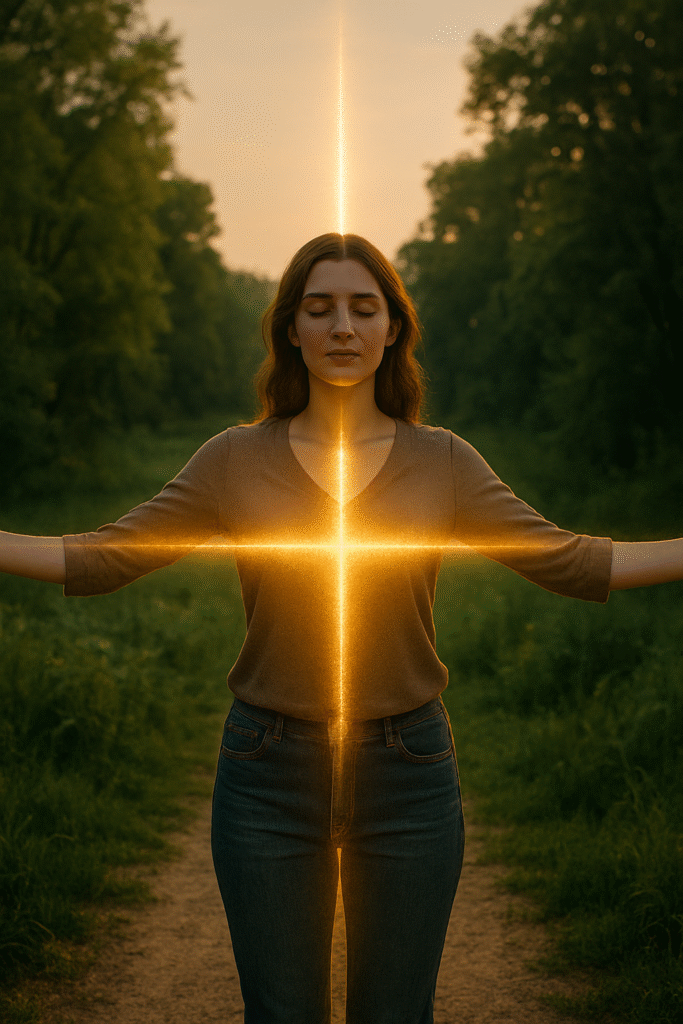
The Center: Balance, Fluidity, and the Living Mystery
Between all of these directional energies lies the center of the cross—the space of integration, balance, and mystery. This is not a void, but a fertile fullness. Here we find identities and experiences that do not conform neatly to one axis, but hold the tension of several.
The center is home to:
- Bisexuality and pansexuality, which embrace love across gender binaries and open the heart to a wider field of attraction.
- Androgyny, which blends masculine and feminine traits into a unique synthesis.
- Nonbinary and transgender identities, which transcend conventional gender roles and challenge binary thinking.
- Spiritual seekers, who may feel called to walk paths of both eros and agape in changing forms.
Some people experience fluidity in gender and sexuality over time, shifting between these dimensions in ways that are not chaotic but creative. The CGE can help such individuals track their evolving journey, name their experiences, and explore new possibilities with intention and reverence.
To dwell near the center is not to escape definition, but to deepen it—to live from a place of creative openness, where multiple currents of being can co-exist. It honors those whose journey is marked by fluidity and transformation, and who embody the evolving edge of human becoming.
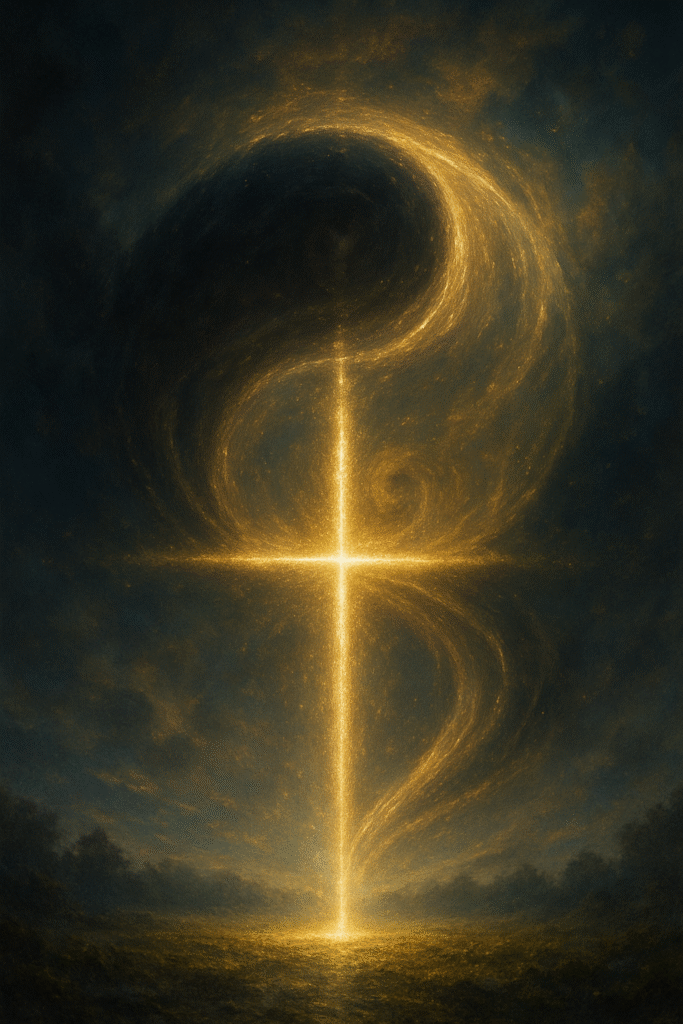
Principles, Energies, Archetypes: A New Language of Gender and Eros
What makes the Cross of Gender and Eros different from most frameworks of gender and sexuality is that it treats these not as merely biological facts or social constructs, but as real forces—living energies that operate within the psyche and body alike.
1. Principles
Each direction can be understood as a guiding value or ethical orientation:
- Eros as the principle of desire, passion, and creative union.
- Agape as the principle of unconditional love, service, and grounded care.
- Femininity as the principle of relationality, intuition, and receptive power.
- Masculinity as the principle of action, discernment, and structured clarity.
These are not moral codes, but ways of being that shape how we love, create, and interact with others. They can help us understand what motivates us and what we need to thrive.
2. Subtle Energies
The cross also depicts energetic patterns akin to yin and yang. These energies move through us, influencing our relationships, emotions, and even our spiritual practice. They can be cultivated, balanced, or released depending on our needs and season of life.
3. Archetypes
Finally, the CGE presents a symbolic universe populated with inner figures:
- The Inner Feminine (She Who Feels and Flows)
- The Inner Masculine (He Who Acts and Anchors)
- The Inner Heterophile (Lover of Difference)
- The Inner Homophile (Lover of Resonance)
These archetypes are not bound to identity categories. They are presences—deep forces that awaken within us, shaping our longings, fears, and callings. Working with them consciously can help us come into greater inner harmony.
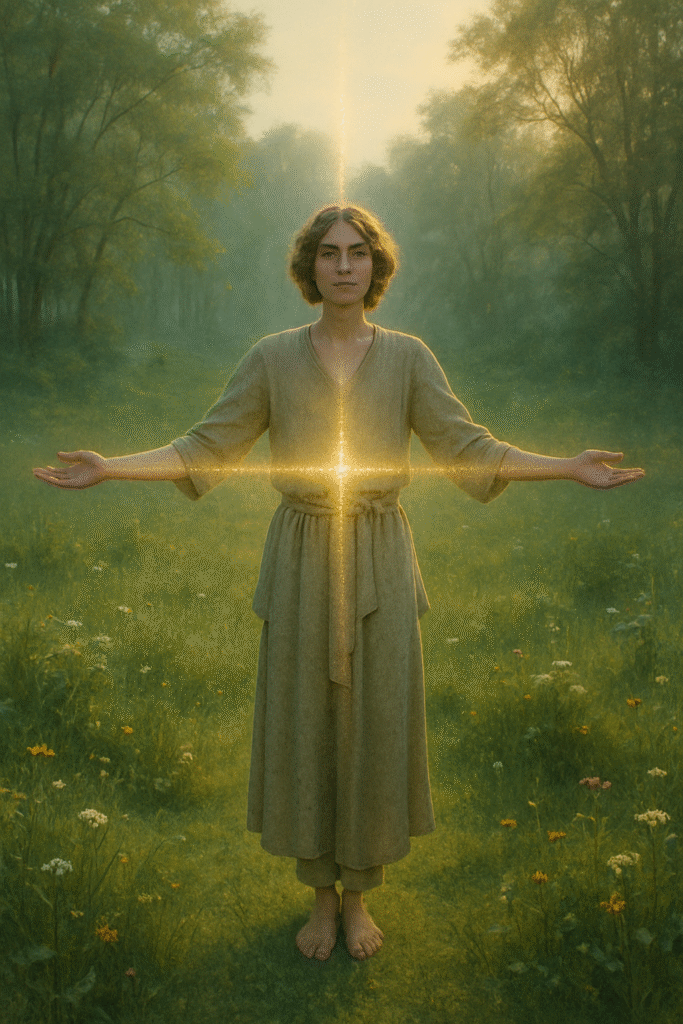
No Place Is Wrong: Ethics of Inclusion and Self-Honoring
The Cross of Gender and Eros is not a diagnostic tool. It doesn’t measure correctness. It doesn’t assign value or hierarchy to any direction. There is no wrong place to be on this cross. There is only the question: Where am I now? And how can I live from this place with integrity?
This perspective frees us from shame and comparison. It invites us into a posture of discernment, not judgment. It helps us see others with more compassion, knowing that their place on the cross—whether aligned with traditional norms or not—is a sacred part of their path.
For those who feel lost, rejected, or confused about their identity, the CGE offers spiritual grounding. It says: You belong. You are whole. Your being is not an error, but a radiant expression of the Center itself.
And for those in positions of privilege or stability, it reminds us to cultivate humility, openness, and reverence for the mystery of others.
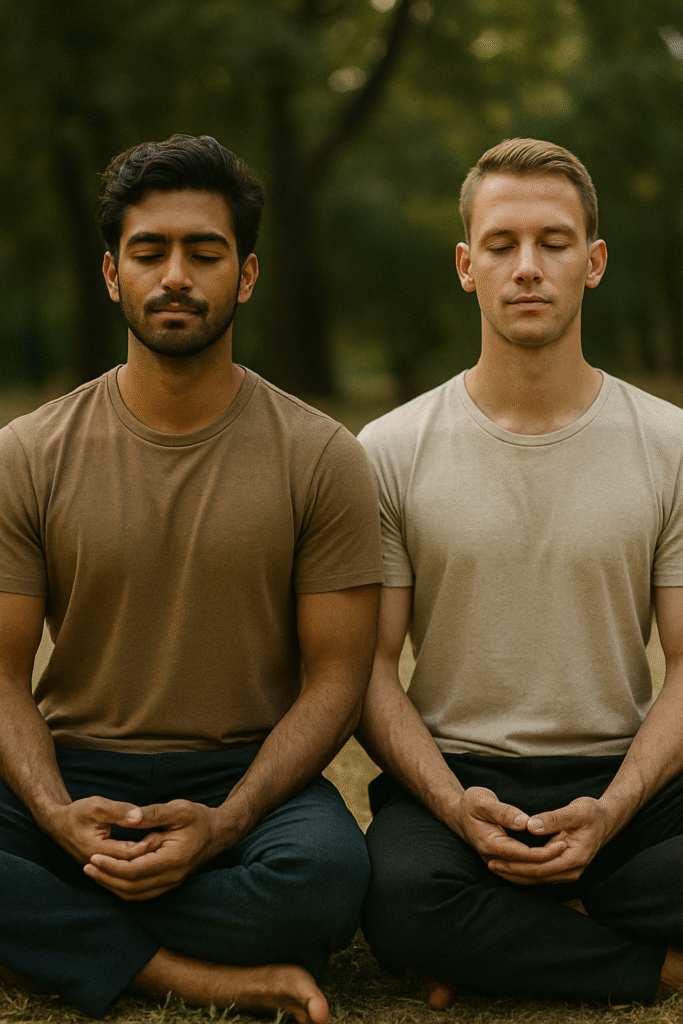
Living the CGE: Practical Implications
What might it mean to live in alignment with the Cross of Gender and Eros?
- In spiritual practice: You might honor different directions of the cross in different rituals—invoking eros in ecstatic prayer, agape in silent meditation, the feminine in lunar rites, the masculine in solar devotions. Each direction becomes a spiritual doorway.
- In relationships: You might notice when you’re operating from eros or agape, when you’re expressing masculine or feminine qualities, and invite your partners to do the same. You might find greater freedom in embracing both sameness and difference in love, whether romantic or platonic.
- In sexuality: For those exploring the erotic dimensions of their identity, the CGE offers a powerful lens. In the bedroom, partners may find it illuminating to consciously play with the directional energies—mixing masculine and feminine expressions, invoking eros and agape, or exploring polarity and resonance in erotic, sacred, or playful ways.
- In identity work: You can use the cross as a mirror—where do you feel most at home? Where do you feel stretched? Where is your edge of growth? It can also guide therapists, coaches, and spiritual directors working with clients navigating gender or sexuality.
- In self-exploration: Especially for those who experience gender or sexual fluidity, the CGE provides a map of potential avenues for exploration. You might move from one direction to another in different seasons, honoring the changes as sacred.
- In community: The CGE can foster inclusion by helping us see that all expressions of gender and love are part of a sacred whole—not deviations, but directions.

Conclusion: From the Center, In All Directions
The Cross of Gender and Eros is a symbol for our times. It offers a vision of human identity that is spiritually rich, psychologically profound, and radically inclusive.
In a culture that often splits body and soul, masculine and feminine, straight and queer, the CGE offers a reintegration. It teaches us that eros and agape are not in conflict. That masculinity and femininity are not enemies. That sexuality and spirituality are not opposed.
Instead, all of these are energies of the Center—expressions of the Divine radiating through the human form.
May we each find our place on this cross.
May we honor others in their place.
And may we all live from the Center, radiating love in all directions.
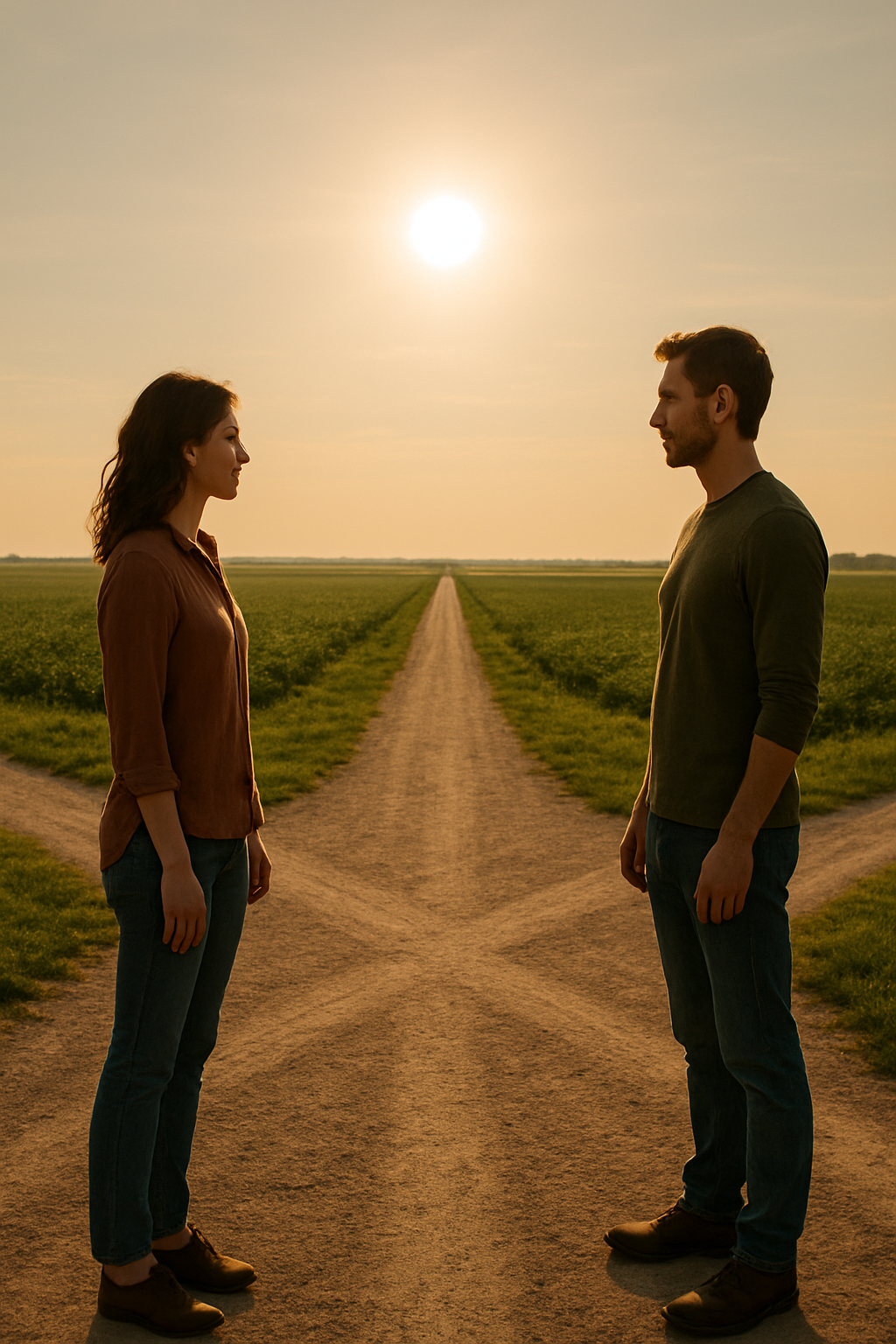
Recent Comments